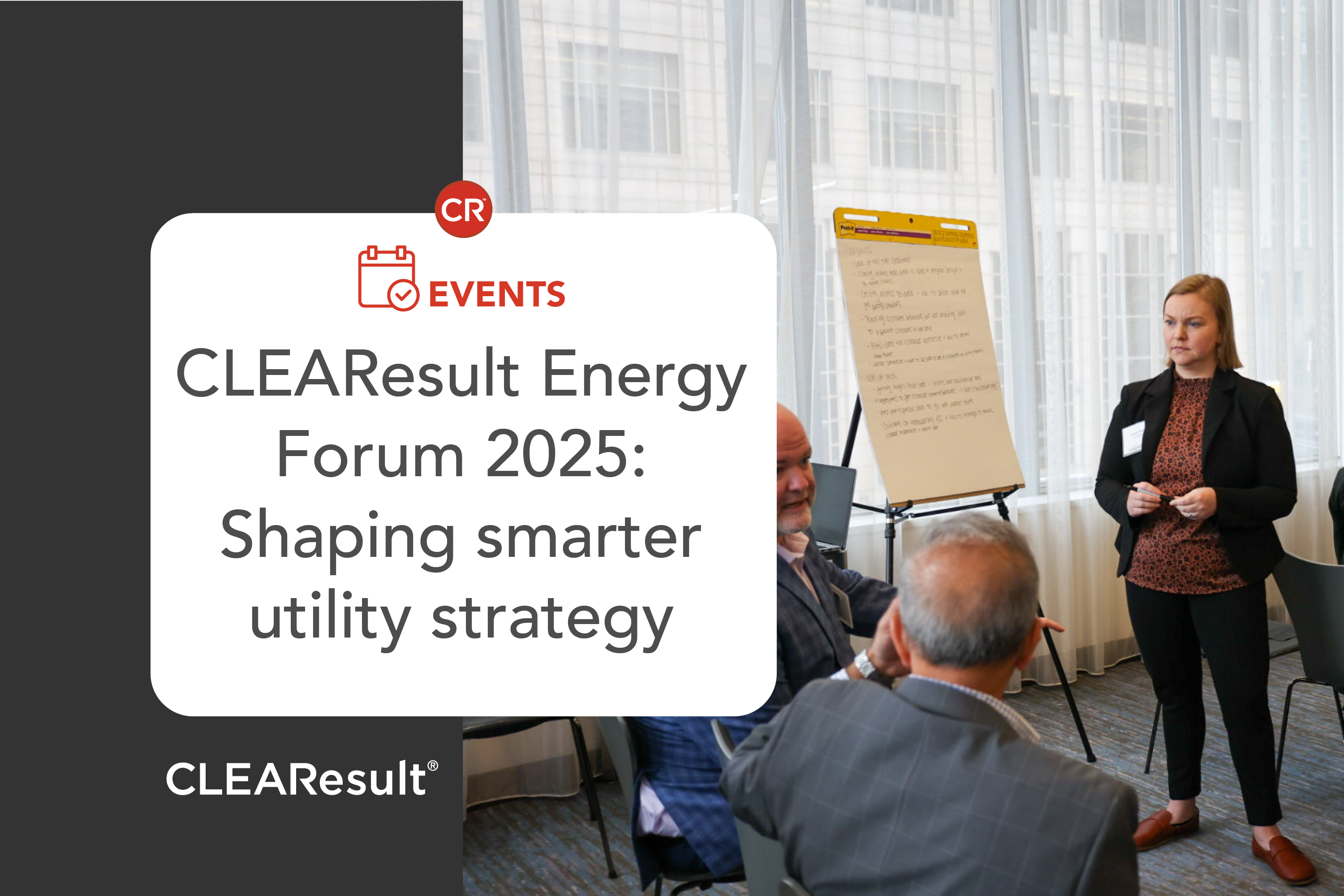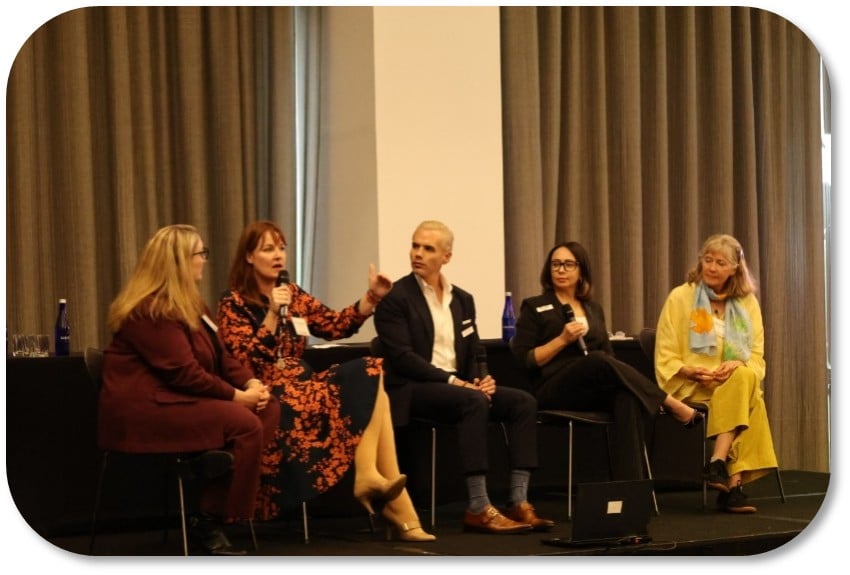CLEAResult Energy Forum 2025: Industry perspectives shaping smarter utility strategy and market engagement

The 2025 CLEAResult Energy Forum breakout sessions positioned a sharp lens on the evolving priorities and operational realities shaping today’s energy and utilities. Attendees – from utilities and regional businesses to nonprofits and community advocates – brought grounded, real-world perspectives informed by shifting market dynamics. These sessions sparked meaningful dialogue around how innovation, strategic partnerships, and targeted investments are actively reshaping the response to supply-demand challenges.
Emerging technologies for utility innovation
One topic was the role of non-wire alternatives (NWAs) in utility planning. These approaches are gaining traction as cost-effective methods for deferring infrastructure upgrades and extending asset life. Andre Begosso of Kearney emphasized the need to reframe demand-side management (DSM) as a capital strategy, suggesting a shift in how utilities evaluate program value.
“Our perception of DSM can shift to capital. DSM programs should be viewed as a way to extend asset life.” – Andre Begosso, Kearney
Technology integration was explored through multiple lenses, including AI, automation, and distributed energy resources (DERs). Presenters examined how data can be used to improve targeting, streamline workflows, and enhance program delivery, particularly in low-to-moderate income markets. These discussions reflected a growing emphasis on operational efficiency and measurable outcomes.
“There is nowhere where data is so prevalent and actionable than in the customer experience.”– Matt Braman, CLEAResult

A focus on collaboration, customer centricity, and equity for program success
Infrastructure considerations were also addressed in sessions on electrification, strategic energy management, and residential storage. Speakers discussed how integrated technologies – such as batteries paired with rooftop solar – can support grid reliability while meeting customer expectations. The importance of cross-functional collaboration within utilities was noted as a key factor in successful implementation.
“This is an opportunity to build further engagement and trust with your customers. With a utility-owned battery, you are showing you are able to help them with their desire, whether that be energy arbitrage to resilience.” – Jesse DeGrendel, CLEAResult
“I think about creating an ecosystem of programs. You want to have great touchpoints for customers.” – Mark Delevan, Entergy Texas
Sessions on pilot design and concierge-style support highlighted the importance of understanding customer needs and building trust through personalized interaction and concierge services. Speakers underscored that program success depends on designing solutions that are both desirable and actionable for specific customer segments.
“Customer centricity is not about being everything to every customer you have. It's understanding your target customers and designing something that will delight them.” – Wyeth Atchison, CLEAResult
“We need to have that person who can spend two hours on the phone with a customer if they need it, and build that relationship.” – Adam Hammond, AES Indiana
Market engagement strategies received significant attention. One session focused on expanding outreach to contractors, community leaders, and digital influencers in order to increase program visibility and participation. This approach was presented as a way to strengthen credibility and improve campaign effectiveness.
“Having more opportunities to interact with these market actors allows us to touch customers in new ways… and ensures the effectiveness of your campaigns and promotions.” – Ryan Fantino, CLEAResult
“There are people out there on social media championing great energy efficiency work, reflecting broader market actors we should be working with.” – Amanda Hatherly, BPI, Inc.

Why nonprofits matter in establishing trust, reach, and results
Nonprofits bring deep community ties and credibility, especially when engaging underserved populations where trust is essential. At this year’s Energy Forum, a key theme was how expanding partnerships – particularly with diverse nonprofits – can drive more equitable energy solutions. Attendees explored how thinking beyond traditional collaborators provides an opportunity to build trust, expand program reach, and ultimately accelerate grid resilience.
“The first thing we do is a wraparound and career services assessment. That way, if there are any barriers to their successful completion of the program, maybe we can help address them.”– Christina Castillo, Hispanic American Construction Industry Association (HACIA)
Driving savings and trust with Strategic Energy Management (SEM)
SEM was presented as a practical framework for achieving operational efficiency while strengthening relationships between utilities and commercial and industrial customers. The session emphasized SEM’s role in delivering measurable savings through low-cost interventions, often serving as an entry point to broader program participation.
In a year marked by rising energy costs and growing climate urgency, SEM can deliver staggering savings all achieved through low- and no-cost behavioral strategies. These savings, which exclude capital investments, can translate into millions in electric cost reductions and in gas savings for customers and communities. With electric and gas incentives supporting these efforts, the program proves that smart engagement and behavioral science can drive meaningful change.
“The amount of savings from this program is phenomenal… This program really shows that you can get lots of program-changing savings from SEM if you scale it up.”– Keri Macklin, CLEAResult
How states are responding to shifting energy policy
A two-part panel series gathered national and state-level experts to examine how current policy shifts, funding uncertainties and market forces are influencing the path forward for the U.S. energy system.
A major topic was how states are tackling the growing challenge of energy affordability, grid reliability, and rising demand, especially from data centers and electrification. Panelists noted that while early concerns focused on neighborhood infrastructure (like EV-related transformer strain), a bigger issue now is massive energy demand from data centers. This shift raises questions about grid stability, security and affordability, especially for low-income households.
Efforts like the Weatherization Assistance Program and IRA Home Energy Rebates are helping reduce base load and protect families from price spikes. Panelists stressed the need for better access to utility data and smart grid management, using connected appliances as distributed storage.
Innovation, however, is often limited by rigid state program requirements. One promising solution discussed was braided and stacked funding, allowing programs to collaborate and deliver more value at the household level.
"... There's so much opportunity for the programs to collaborate with each other. It's really easy for us to go to braided or stacked funding so that we can do more at any given customer's home. At the same time, the idea that our programs can truly braid and stack to do more for the programs as well is a really compelling argument." – Seth Little, CLEAResult
The 2025 CLEAResult Energy Forum signaled that the energy sector is entering a new era defined by smarter collaboration, data-driven decision-making, and inclusive program design. Breakout sessions revealed a collective shift toward resilience and equity, as utilities and their partners reimagine how they plan, invest, and build trust. With technology-enabled services at the forefront, Energy Forum helped unify key industry leaders around shared commitment to long-term transformation and measurable impact.
_________
Visit clearesult.com to learn how CLEAResult is partnering with utilities and companies to navigate the supply-demand imbalance with expert guidance and innovative technology.